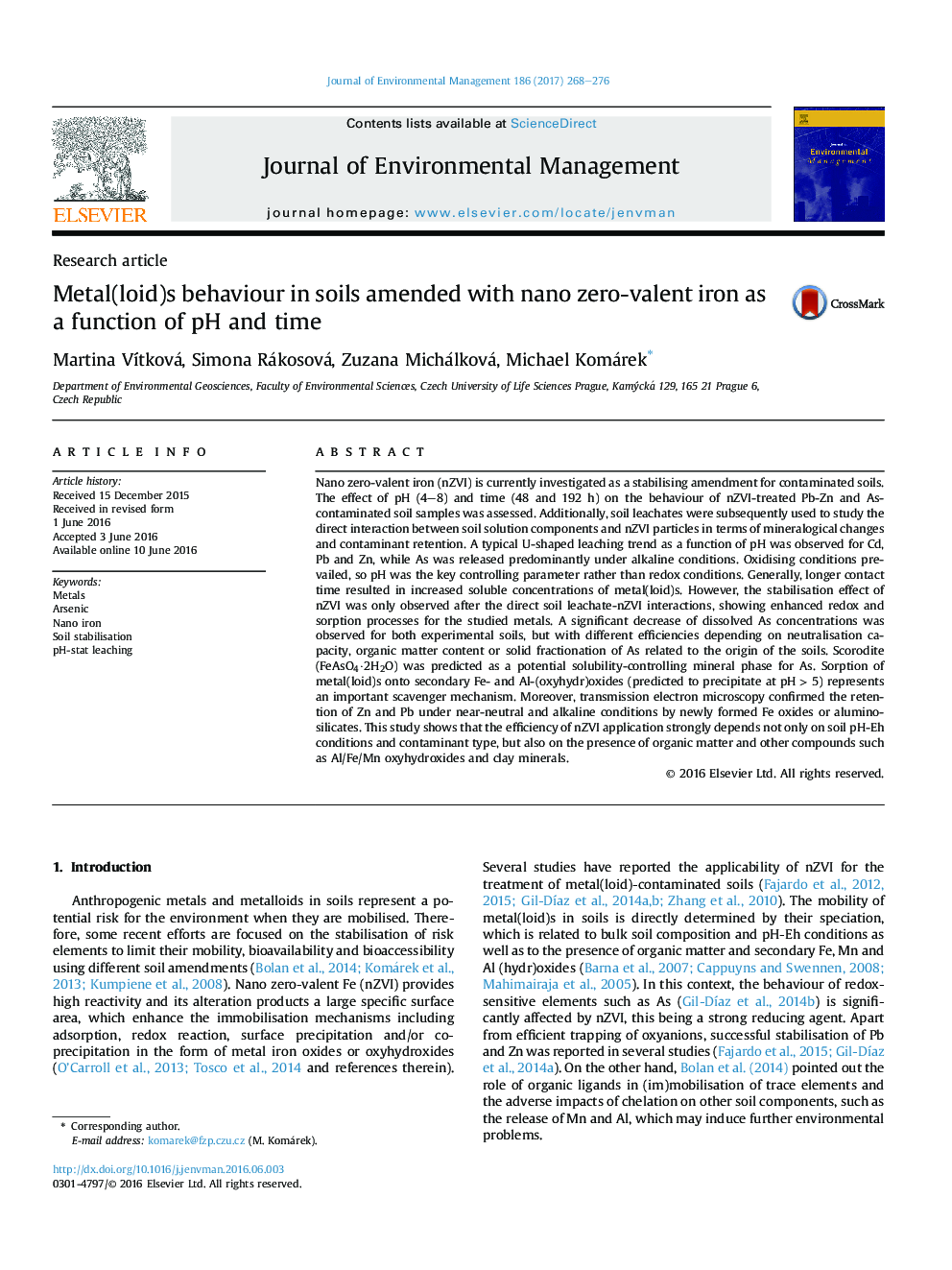| Article ID | Journal | Published Year | Pages | File Type |
|---|---|---|---|---|
| 5117427 | Journal of Environmental Management | 2017 | 9 Pages |
â¢Nano zero-valent iron application enhanced As retention in two soil types.â¢Formation of secondary Fe oxides immobilised As(V) under given conditions.â¢Metallic carbonates play an important role in Cd, Pb, Zn retention at pH 7-8.â¢Direct soil leachate-iron interactions accelerated stabilisation processes.â¢Metal(loid) mobility depends on DOC, Fe/Mn/Al oxides or clay minerals content.
Nano zero-valent iron (nZVI) is currently investigated as a stabilising amendment for contaminated soils. The effect of pH (4-8) and time (48 and 192 h) on the behaviour of nZVI-treated Pb-Zn and As-contaminated soil samples was assessed. Additionally, soil leachates were subsequently used to study the direct interaction between soil solution components and nZVI particles in terms of mineralogical changes and contaminant retention. A typical U-shaped leaching trend as a function of pH was observed for Cd, Pb and Zn, while As was released predominantly under alkaline conditions. Oxidising conditions prevailed, so pH was the key controlling parameter rather than redox conditions. Generally, longer contact time resulted in increased soluble concentrations of metal(loid)s. However, the stabilisation effect of nZVI was only observed after the direct soil leachate-nZVI interactions, showing enhanced redox and sorption processes for the studied metals. A significant decrease of dissolved As concentrations was observed for both experimental soils, but with different efficiencies depending on neutralisation capacity, organic matter content or solid fractionation of As related to the origin of the soils. Scorodite (FeAsO4·2H2O) was predicted as a potential solubility-controlling mineral phase for As. Sorption of metal(loid)s onto secondary Fe- and Al-(oxyhydr)oxides (predicted to precipitate at pH > 5) represents an important scavenger mechanism. Moreover, transmission electron microscopy confirmed the retention of Zn and Pb under near-neutral and alkaline conditions by newly formed Fe oxides or aluminosilicates. This study shows that the efficiency of nZVI application strongly depends not only on soil pH-Eh conditions and contaminant type, but also on the presence of organic matter and other compounds such as Al/Fe/Mn oxyhydroxides and clay minerals.
